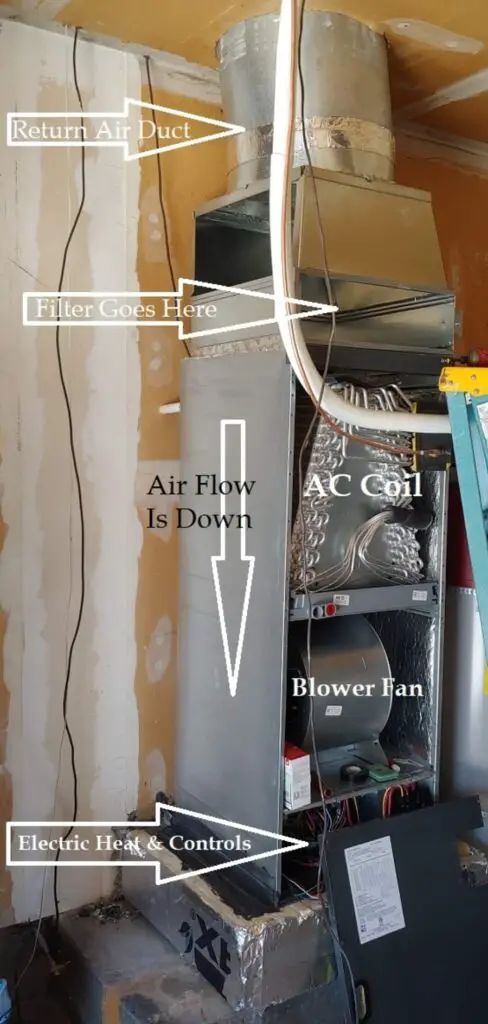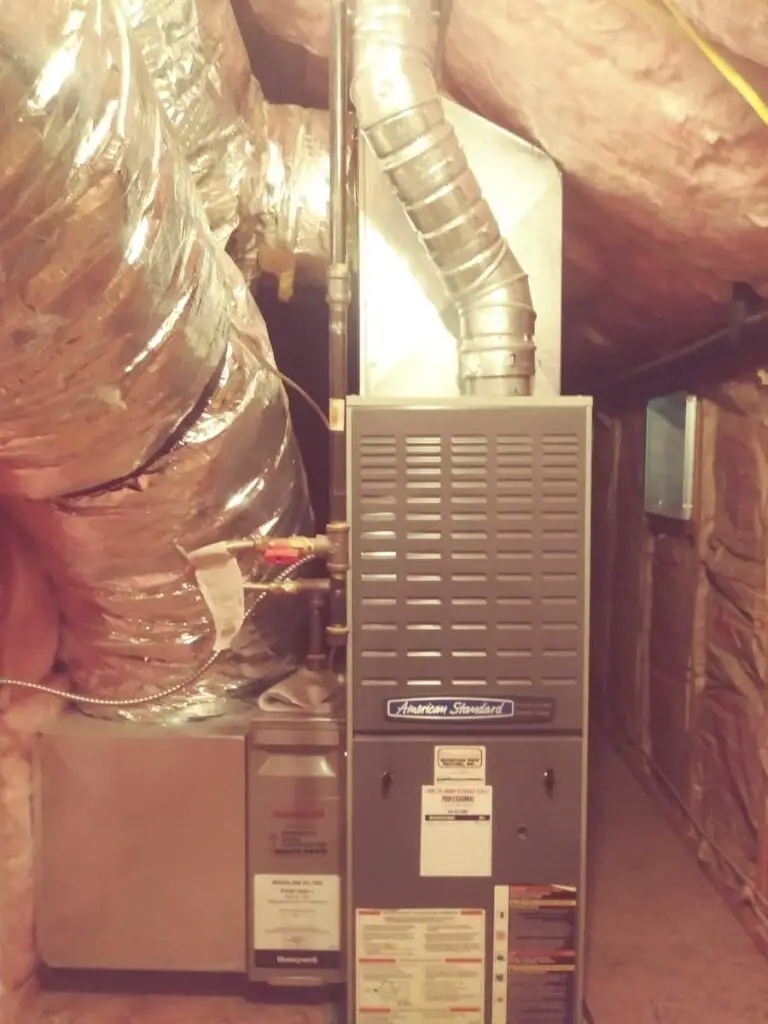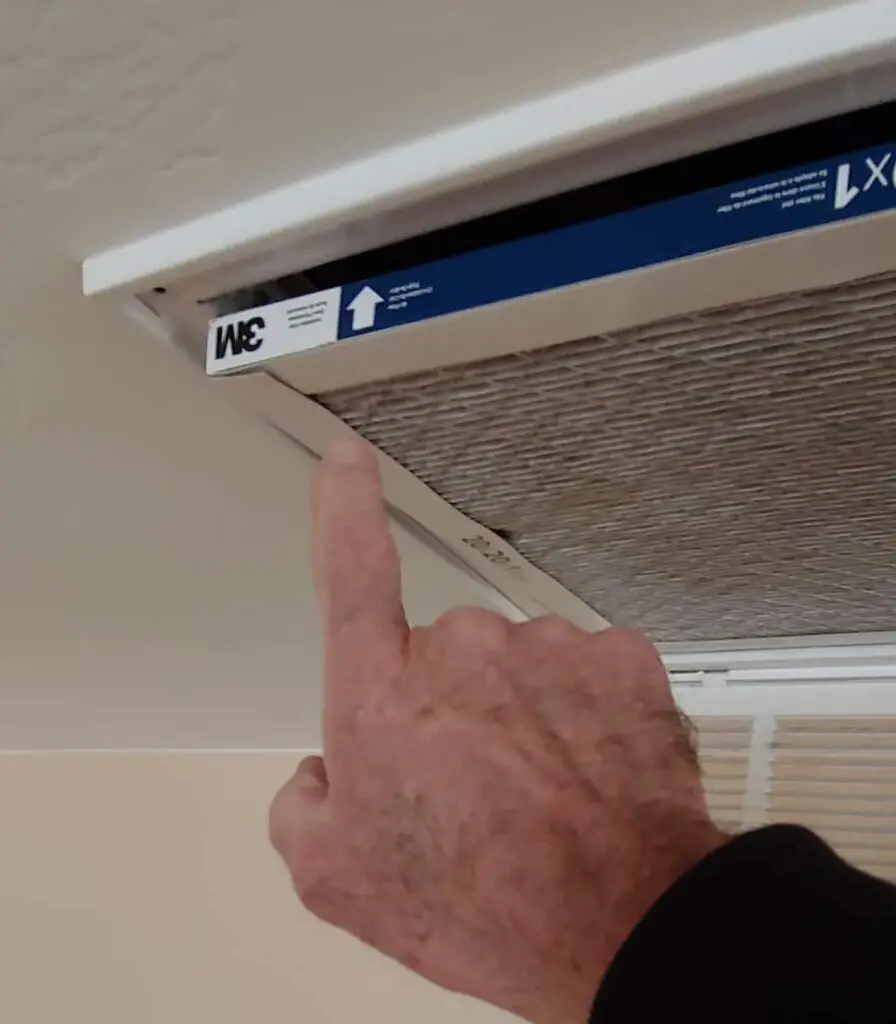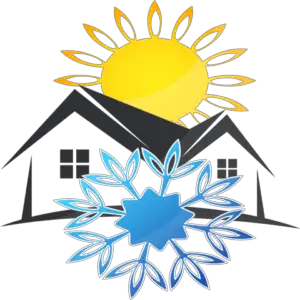How can I tell which way the air flows in my furnace and ductwork? My filter has an arrow, but which way does the air travel in the ductwork? I can’t tell you how often I’ve encountered a filter installed backward when servicing my customer’s equipment.
Because it is difficult for the layperson to determine the correct direction of the airflow in a furnace or HVAC system, it’s a fact that even I, yes me, with over 40 years of experience, have had to stand back and do a little study before understanding a system’s airflow direction.
But alas, and to your rescue, there are some simple things to look for to understand your HVAC system and the airflow it produces better. Specifically, in which direction does the air flow or even the way the arrow on your filter points?
Every furnace has an air inlet and an air outlet. The inlet is referred to as the return air, and the outlet is the supply air or conditioned air into the home. The airflow direction is from the return air to the supply side.
Try removing the doors of the furnace. Be careful. The direction of the airflow is from the blower section to the burner or elements.
Conditioned air means filtered, heated, cooled, humidified, purified, or whatever you want to pay for to make your home comfortable.
So, logically speaking, we want the filter to be in the return of the air handler (furnace) to keep all the furnace components clean and the air the furnace delivers to your home. The image below shows an electric furnace with an AC coil. Not all installations will have this coil.
Notice just under the tip of the arrow that says “Filter Goes Here” there is about a 2″ wide strip of metal at the top of the furnace. That’s a removable door that the factory put there for a flimsy 1″ filter. Manufacturers put that slot there because many installers cut corners or purchasers want cheap installs. A good filter will be exterior to the furnace and be 2 inches thick or more.
The filter can on top of this furnace is a Honeywell and takes a 4″ filter. Don’t balk at the cost. They will last much longer and do a superior job compared to the even pleated 1″ filters. Check out how they look on Amazon here (ad).

If you are inclined to remove the doors on your furnace, then you can compare this image to your particular installation.
The blower has to blow into the electric strip heaters, which are in the control section. So your air flow would be in that direction. Electric furnaces are multidirectional. They can be installed in an up, down, or horizontal position.
What’s The Airflow Direction On An Up Flow Gas Furnace?
Using the information from the content of this article, you should be able to tell which direction the air flows through this furnace, further enabling you to know which direction that silly arrow on your air filter is supposed to point.
Notice in the image below the Honeywell air filter. It’s to the left of the bottom of the furnace. If you recognize that the airflow is from the filter to the furnace, then you’ve nailed it. The bottom compartment or door on the furnace is the blower or fan compartment. The air from the blower goes through the burners on the top of the furnace.

So, your filter arrow is going to point toward the furnace. Don’t worry too much if you have discovered that the filter has been installed backward. Just leave it until it’s ready to be changed. If you are unsure when a filter is ready to be changed, go to one of my articles and read all about knowing before you throw your money away.
Horizontal Furnace Airflow Direction
Learning more about these furnaces and how they are laid out never hurts. We run into many horizontal installations in attics and sometimes in crawlspaces in the HVAC business. Either one is not an ideal place for ductwork or the equipment to heat and cool a home.
The extreme temperatures of an attic are a hard obstacle to overcome when looking for good efficiency. Nevertheless, contractors and designers keep putting them in some of the most undesirable places. So, with what you know now, look at the image below and determine what direction the air flows.

I’ll bet you got it right. The filter is on the left of the furnace, the blower is in the middle, and the controls are on the right. Air is flowing from the left to the right.
Airflow Direction For A Ceiling Or Wall Return Grille
The same rule applies to anything on the return side of the furnace. The airflow is from the return grill toward the furnace or inward of the return grill.

It doesn’t help matters when the 3M is upside down, and you’re on a ladder trying to decipher the dang thing. Just concentrate on the arrow, and you will find success. The bottom line in this discussion on airflow direction is that the airflow goes from the filter to the furnace.
By the way, if you want to improve your filter for these filter grills, there is a great product that will decrease the number of times you have to change your filter and help increase the airflow over using one of those 1″ pleated filters.
These filters are available on Amazon. They work pretty slick. The only modification you may have to make is cutting some of the insulation off inside the filter box just beyond the filet. Looking at the image of the filter, you can see a 1″ lip around one side of the filter. This lip fits into the filter grill just like your old filter (ad), but the bulk of the filter fits up inside. You close the filter grill door, and there you go.
You can see the filter on Amazon’s website by clicking the link above. I wish I had one in stock at this time, or I would have included a really good image.
